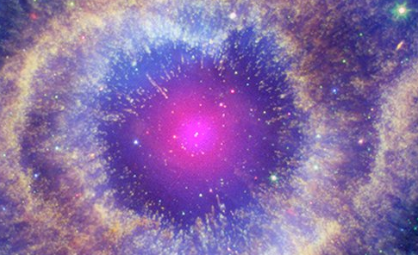Space weather can be both beautiful, like the stunning auroras, and dangerous, damaging technology. Predicting space weather is crucial, and researchers have now gained a better understanding of coronal mass ejections (CMEs), aiding in forecasting future dangers.
CMEs are powerful expulsions of magnetic fields and plasma from the Sun. When this plasma, composed of charged particles, hits Earth’s magnetosphere, it can cause geomagnetic storms, affecting satellites and technology. These particles travel via a magnetic field towards the polar regions, creating auroras when they collide with the atmosphere.
Space is a dangerous place! Our ‘billion-star surveyor’ @ESAGaia was recently struck by a high-speed micrometeoroid and the strongest solar storm in 20 years. But thanks to the hard work of the Gaia teams on Earth, routine operations have been restored.https://t.co/3bwgKKGAiu
— ESA Operations (@esaoperations) July 17, 2024
A critical factor in predicting solar storm intensity is the speed of CMEs post-eruption. Traditionally, this speed is measured only after the CME has erupted. However, scientists have now discovered a method to predict the speed of a CME before it erupts.
“There are ways to look into the CMEs before they even have erupted from the Sun, and that is by looking into their source region evolutions,” said Dr. Harshita Gandhi, a solar physicist at Aberystwyth University.
Dr. Gandhi and her team studied “active regions” on the Sun where CMEs originate. They measured these regions’ properties before, during, and after a CME release. This allowed them to estimate a parameter called “critical height,” which is the height above which the magnetic field becomes unstable and can emit a CME. They found a correlation between this height and the CME’s speed.
“The higher the critical height you find in the corona in your active region, the faster the CME’s speed you would expect from that active region,” explained Dr. Gandhi.
By estimating this height, scientists can predict the likely speed of the CME, allowing for better predictions of the potential danger of a CME. The Sun is continuously monitored by space agencies worldwide, making it feasible to implement these parameter estimations.
Fascinating stuff from Dr Yardley, who shares several images related to May’s dazzling Northern Lights display across most of the UK.
They include the massive Active Region on the Sun which led to the eruption of 7-8 coronal mass ejections in very close succession.#NAM2024 pic.twitter.com/13Cxa2vvaV
— Royal Astronomical Society (@RoyalAstroSoc) July 19, 2024
To further enhance these predictions, the team plans to incorporate another parameter: the strength of the magnetic field. This will refine the speed estimates, improving space weather forecasting. This research not only expands our knowledge of the Sun but also enhances our ability to forecast space weather, which is vital in a technologically dependent world, especially in the event of another Carrington Event-level incident.
Dr. Gandhi presented the team’s findings at the Royal Astronomical Society’s National Astronomy Meeting in Hull, UK.
Key Points:
- Researchers have improved predictions of coronal mass ejections (CMEs) from the Sun.
- By studying the Sun’s “active regions,” scientists can estimate the speed of CMEs before they erupt.
- The speed of a CME is linked to the “critical height” in the corona above which the magnetic field becomes unstable.
- Future improvements will include estimating the magnetic field strength to refine CME speed predictions.
- This advancement enhances space weather forecasting, crucial for mitigating potential technological damage.
Conner T – Reprinted with permission of Whatfinger News



